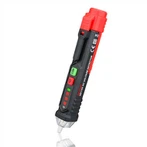Infrared gas detector working principle
Infrared gas detector is a commonly used gas detection device that achieves gas detection by measuring the absorption characteristics of the target gas within the infrared spectral range. Infrared gas detectors have advantages such as high precision, fast response, and good stability, and are widely used in industrial and environmental monitoring fields.
The working principle of an infrared gas detector can be simply summarized as the following steps: the infrared light source generates an infrared beam, which is detected by the transmission of the measured gas in the gas chamber, and then reaches the infrared detector through an infrared filter. The infrared detector converts the received infrared light signal into an electrical signal related to the concentration of the measured gas, and then amplifies and processes the signal to ultimately display or output the concentration value.
In infrared gas detectors, the infrared light source is a crucial component. There are two commonly used infrared light sources: thermal radiation type and semi conductive type. Thermal radiation type infrared light sources typically use materials such as heating wires, emitters, or silicon carbides to emit infrared radiation through resistance heating. Semi conductive infrared light sources typically use infrared light-emitting diodes (IR LEDs) as light sources, which have advantages such as low power and long lifespan.
The function of an infrared filter is to selectively transmit infrared light while shielding other wavelengths of light. According to the characteristics and detection requirements of the tested gas, different wavelengths of infrared filters can be selected. Infrared detectors are used to receive infrared light transmitted through filters and convert infrared light signals into electrical signals for subsequent processing. There are two commonly used infrared detectors: photoconductive and thermoelectric. Photoconductive infrared detectors typically use materials such as HgCdTe to convert infrared light signals through photoelectric effects. Thermoelectric infrared detectors achieve signal conversion by measuring the temperature changes generated by infrared light signals.
When using an infrared gas detector, the first step is to confirm the absorption characteristics of the measured gas towards infrared light. The degree to which different gases absorb specific wavelengths of infrared light varies, so selecting appropriate filters and detectors is crucial. Secondly, it is necessary to calibrate the infrared gas detector to the corresponding measured gas. During the calibration process, it is necessary to provide a sample of the measured gas with a known concentration, and adjust the sensitivity and range of the instrument based on the signal generated by the sample to ensure the accuracy of the detection results.
In practical applications, infrared gas detectors are often equipped with LCD screens or digital interfaces to visually display measurement results. At the same time, data can also be output to the data processing system for recording and analysis by connecting computers or data collection devices. In addition, some advanced infrared gas detectors can also be equipped with alarm devices, which can issue an alarm in a timely manner when abnormal concentrations of gas are detected, ensuring safety.
In summary, infrared gas detectors achieve gas detection by measuring the absorption characteristics of target gases within the infrared spectral range. Its working principle is based on the synergistic effect of infrared light source, infrared filter, and infrared detector. When using an infrared gas detector, it is necessary to select appropriate filters and detectors based on the characteristics of the measured gas, and calibrate and set appropriate working range and sensitivity.






